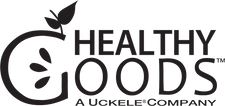Hypertension is a type of cardiovascular disease characterized by elevation of blood pressure above the level considered normal for people of similar racial and environmental backgrounds. When blood pressure is taken on two or more subsequent days and reads 140/90 or above this is considered to be high blood pressure.
Because hypertension affects the entire circulatory system, it can be detrimental to all the major organs, including the heart, brain, and kidneys. It may contribute to death from heart failure, heart attacks, stroke, and even kidney failure. One in five Americans (and one in three adults) has high blood pressure.
Flavonoids, also known as vitamin P, are a class of water-soluble plant pigments giving many plants vivid shades of yellow, orange and red. A high intake of flavonoids can help protect blood vessels from rupture or leakage, enhance vitamin C, protect cells from oxygen damage, and prevent excessive inflammation throughout the body. Indications of maybe requiring more flavonoids would be: easy bruising, frequent nose bleeds, excessive swelling after injury and frequent colds or infections. Some sources of food that contain flavonoids are apples, blueberries, strawberries, cabbage, onions, parsley, pinto beans and tomatoes.
A prospective study conducted in collaboration between scientists from the University of East Anglia (UK), Harvard School of Public Health, and Harvard Medical School examined the association between habitual intake of flavonoids and reduced risk of hypertension. The researchers analyzed data from 87,242 women from the Nurses' Health Study (NHS) II, 46,672 women from the NHS I, and 23,043 men from the Health Professionals Follow-Up Study (HPFS). Participants were followed for 14 years after which 29,018 cases of hypertension in women and 5,629 cases of hypertension in men were reported. The results were the highest average intake of anthocyanins, predominately from blueberries and strawberries, (ranging from 16.2 to 21.0 milligrams per day) were associated with an 8 percent decrease in the risk of hypertension, while the benefits increased to a 12 percent reduction in risk when the analysis was limited to people over the age of 60, compared with the lowest average intakes, which ranged from 5.7 to 6.8. In conclusion the researchers wrote:
“Our data suggested that several specific classes of flavonoids were associated with blood pressure reduction, specifically anthocyanins, which resulted in a 12 percent reduction in hypertension risk in multivariate analyses.These data are important because anthocyanins are present in commonly consumed fruit, such as blueberries, cranberries, and strawberries, which can be readily incorporated into the diet.”1
1Cassidy A, O’Reilly EJ, Kay C, et al. Habitual intake of flavonoid subclasses and incident hypertension in adults. Am J Clin Nutr. 2010.
Article courtesy of NHIonDemand.com, found here. Original Source: American Journal of Clinical Nutrition. 2/22/11.

